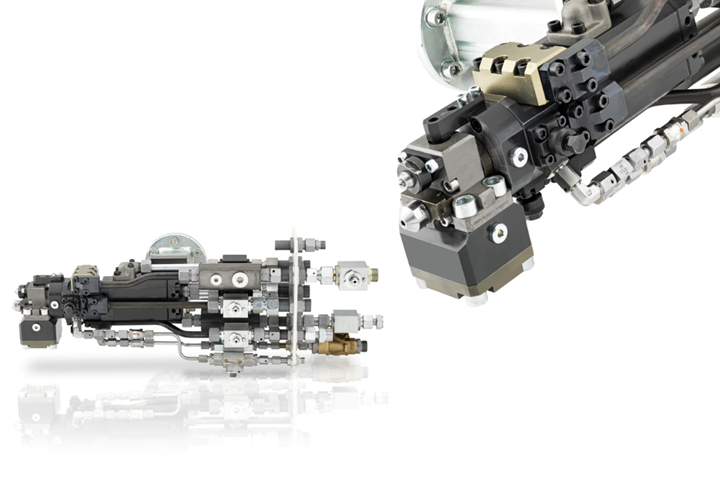KraussMaffei is expanding the capabilities of its Structural Component Spraying (SCS) process to apply reactive polyurethane (PU) via nozzle change technology. When SCS processes are used in the production of automotive (e.g. load floors and roofs) and structural components, flexible solutions address the balance between efficiency and resource saving.

According to KraussMaffei, in the SCS process, “a layer consisting of a fiber mat and a honeycomb core is spray-coated with unreinforced polyurethane, inserted into a mold and compression molded. Further developments in LFI/honeycomb technology reduce the thickness of the cover layer and weight, thus optimizing lightweight construction. By enabling quick change between flat and round nozzles, material waste is reduced and accuracy is improved.
Sergi, Southern Europe Industrialization Manager at KraussMaffei Automotive customer Trèves
Salart said: “The efficiency of our spraying processes is crucial for sustainable production. KraussMaffei’s nozzle change system significantly enhances our operations in Treroc, Morocco and will soon be implemented at our Romanian factory.”
KraussMaffei believes that the ability to switch seamlessly between nozzles offers several advantages compared to traditional methods. The flat nozzle covers a larger area quickly (throughput around 50 g/s, maximum spray width 120 mm), while the round nozzle precisely targets and reinforces edge areas (up to 130 g/s), optimizing material usage. The quick changeover of the nozzle change module also reduces downtime to seconds, simplifying the production process. Furthermore, the technology’s adaptability to different material quantities ensures optimal resource utilization, reducing material waste and production time.
In addition to increased efficiency, the environmental impact is said to be huge. For example, reducing the spraying time of a 2200×1200 mm component can reduce material consumption by 30%, minimizing waste and supporting sustainable practices.
Importantly, the nozzle change module is fast. For example, if the user starts with a flat nozzle and sprays the loading floor completely, compressed air is used to clean the discharge channel in about 3 seconds. Changes to the circular nozzle itself are performed hydraulically by pushing the secondary channel geometry into position. This only takes about 100 milliseconds and the process continues. Mixing heads are equipped with spring-loaded nozzles or nozzles with various devices to be able to handle variable amounts of material. The latter works with an air cushion located in an air chamber behind the nozzle. In the event of fluctuations in component throughput, various nozzles can better balance pressure and achieve optimal process parameters at different discharge rates.
The established process at KraussMaffei starts with the operation of the nozzles on the robot (each nozzle has its own mixing head). This is followed by a mixing head with a conversion device and finally a conversion module with which it can be rotated from one nozzle to another in a matter of seconds. Patent applications have been filed in several countries and some have been approved.
Sergi
Salart emphasizes: “Investment in PUR systems with conversion technology from KraussMaffei has proven to be not only reliable but also in line with our sustainability goals. The success of these low-maintenance systems leads us to plan further implementations.”

 微信扫一扫打赏
微信扫一扫打赏

